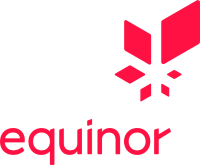38th Annual GCSSEPM Foundation Perkins-Rosen Research Conference
This event has passed. Stay tune for future GCSSEPM details.
The Cenomanian-Turonian Stratigraphic Interval Across the Americas: Argentina to Alaska (and beyond)
Took place Conference 5-7 December 2022 | Workshop 8-9 December 2022
Location: Houston, Texas

The Cenomanian-Turonian (C-T) is a stratigraphic interval significant for the widespread occurrence of carbon-rich sediments, especially organic-rich mudstones (ORMs), resulting in sequestration of large volumes of organic carbon, and the deposition of major hydrocarbon source rocks and unconventional reservoirs. The coincidence of ORMs with a dramatic carbon isotopic excursion (Oceanic Anoxic Event - OAE-2) and the highest sea-levels of the Phanerozoic, have led to hypotheses that these attributes are produced by complex interactions between the bio-, hydro- and geospheres unique to this period. One common assertion is that high nutrient availability caused high primary productivity in the oceans, resulting in large volumes of organic carbon being fluxed to the sediment-water interface. This carbon input contributed to low oxygen concentrations, which, coupled with reduced water column circulation and reduced coarse clastic inputs, resulted in organic-rich rocks being coincidentally deposited across the globe. But is this the whole story?
The aim of the 38th Annual GCSSEPM Foundation Perkins-Rosen Research Conference is to understand the drivers for the observed C-T record and what this tells us about the carbon cycle and the Earth system. To do this we will (1) examine the C-T sections preserved across the Americas (Argentina to the Arctic); (2) provide a review of the climatic and oceanographic processes that drive the carbon cycle and C-T geological record; (3) provide the latest ideas on the tectonic and paleogeographic context in which these processes operated during the C-T; (4) provide the most recent research on the stratigraphic record of the C-T and how well constrained, or not, this is. The meeting will target successions in diverse depositional basins with varied tectonic histories and different oceanographic settings along this south to north transect. This examination of how the fundamental stratigraphic controls interact to influence facies variability, including organic carbon enrichment, should shed light on this exceptional and important period of the geological record when large volumes of organic carbon were being sequestered, at least locally, from the biosphere into the geosphere. This will provide an excellent opportunity to apply learnings and data from the petroleum industry to better understand the Earth system, especially the carbon cycle.
Due to security access, onsite registrations cannot be accepted. Pre-registration is encouraged for this conference. Contact us with questions.
The GCSSEPM Foundation supports and complies with the SEPM Code of Conduct.
Overview of 2022 Schedule
December 4th | Icebreaker Houston Hilton Westchase 5:30-7:30 PM |
December 5-7, 2022 | Conference in Houston |
December 8-9, 2022 | Core Workshop in Houston |
GCSSEPM Perkins-Rosen 2022 Main Conference Preliminary Program.xlsx
GCSSEPM 2022 Core Workshop Overview and Program.docx
Venues

Research Conference, December 5-7, 2022
Equinor US
2107 CityWest Blvd, Suite 100
Houston, Texas 77042
Core Workshop, December 8-9, 2022
Organizing Committee
Joe Macquaker, ExxonMobil, Houston, TX
Paul Markwick, Knowing Earth, Leeds, UK
Katherine J. Whidden, USGS, Denver, CO
John Suter, GCSSEPM Foundation, Houston, TX
Technical Program Committee
Jason Flaum, USGS
Lauren Birgenheier, University of Utah, Salt Lake City, UT
Richard Denne, TCU, Fort Worth, TX
Toti Larsson, BEG, Austin, TX
Per Pedersen, University of Calgary, Calgary, AB, Canada
Steve Sonnenberg, Colorado School of Mines, Golden, CO
Milly Wright, Houston, TX
Sponsorship
This conference is made possible by our sponsors!
The GCSSEPM Foundation supports and complies with the SEPM Code of Conduct.





